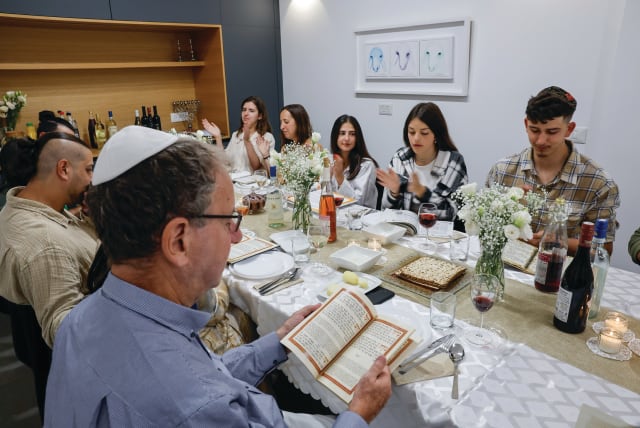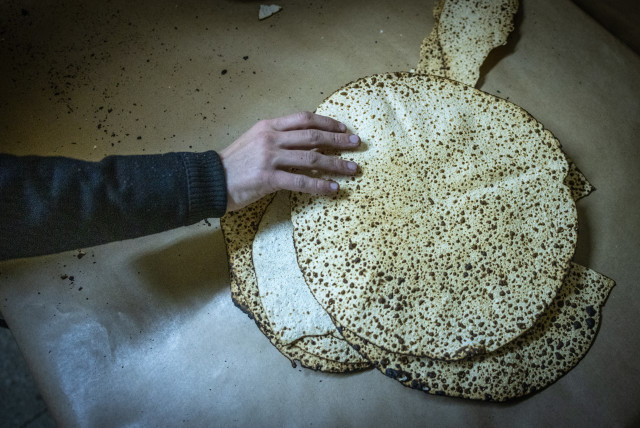Passover is an expression of Jewish indigeneity in the Land of Israel - opinion

In Passover, we honor our origin story as a people when we became a nation centered in the Land of Israel as well as the land itself.
The Jews are indigenous to the Land of Israel. We are as indigenous to that land as any other people are to theirs. And although many of us are not conscious of it, we consistently represent our indigeneity through our Jewish practice.
Whether it’s circumcision or the mikveh, celebrating Rosh Hashanah or Shavuot, or whether it’s speaking Hebrew or praying for rain in Israel, we represent our connection to the Land of Israel itself.
As we approach Passover next week, it is worth considering it is the festival most observed by Jews around the world, and happens to be one of the most significant expressions of indigeneity. In it, we honor our origin story as a people when we became a nation centered in the Land of Israel as well as the land itself.
Not only is it rooted in the formation of the Jewish nation and our journey to the Land of Israel, but before Passover became a story about the exodus from Egypt, most historians agree that it started life as two separate festivals: one harvest festival known as Hag Hamatzot and the other known as Passover, both rooted in the agricultural cycle and change of seasons. Hag Hamatzot, was based on the barley harvest and was rooted in sanctifying the first crops. As part of this ancient celebration, our ancestors ate matzah to sanctify the first produce of the soil.
The ancient holiday of Passover is rooted in the sacrifice of the most recently born animal by semi-nomadic Israelites. Hence, the paschal lamb. Some historians then posit that these festivals were then fused with the exodus story to create Passover as we know it today. And as Tamara Prosic wrote in The Development and Symbolism of Passover, “The combined feast became a commemorative celebration through which the people relived the events on which the existence as an independent nation was based.”

The Book of Shemot (literally translating to “Names,” but commonly referred to as Exodus), written around 26,00 years ago in the Southern Israelite Kingdom of Judah, instructs Jews how to celebrate this festival. In it, YHWH instructs Moses to tell everyone about the paschal lamb. He says to set aside a 10-day- to one-month-old lamb/kid to be killed on the 14th day, and to place its blood on the lintels and doorposts of houses where the meat is to be consumed. Then, at night, they must eat the roasted meat together with unleavened bread (matzot) and bitter herbs (maror).
Passover a significant part of Judean culture
This rite is to be adhered to in every generation for all time. Following the building of a temple in Jerusalem, Passover became a pilgrimage festival (one of the three in the Jewish calendar year). In Melachim (Book of Kings), it is recorded that King Josiah of Judah (said to have been the king when the Torah was written) ordered the Jews to “Keep the Passover unto the Lord your God, as it is written in the book of this covenant.”
At this point, the celebration of Passover became a deeply significant part of Judean culture and expression. Josephus describes throngs of Judeans assembling in Jerusalem to honor the sacrifice and the festival. Not only was this commanded, but it was also practiced by the masses.
In terms of how we celebrate Passover today, it is a more recent evolution (more recent still being 2,000 years ago, but that is over 1,000 years into our existence as a distinct collective). There was no record of the Seder from the Second Temple period (516 BCE–70 CE).
Its first mention appears in the Mishnah (the first major written collection of Jewish oral traditions, known as the Oral Torah), which is dated either just before or after the destruction of the Second Temple of Jerusalem in 70 CE. It appears to have developed from cultural exchanges with the Greeks and Romans, who engaged in a symposium that bears striking similarities to what became Seder traditions.
The evolution of this cultural practice does not in any way negate or impinge on our identity as an indigenous people. The Seder is still 2,000 years old, and regardless, indigenous groups are not fixed in one place or time. We are able to evolve while retaining core ideas and values.
While the meaning of Passover and the manner in which it has been celebrated has evolved over time, it is clear that this is a significant cultural expression of Jewishness practiced by Jews for over 3,000 years.
Next week, Jews from all over the world join with their friends and families to take part in Passover, a festival that has – in some form – been celebrated by Jews for millennia.
Although it has evolved, the origins of this festival lie in agriculture, in the seasons, and in the land itself. So even if we celebrate Passover in the Diaspora, we are recognizing our connection with the Land of Israel itself. We also, during this great Jewish theater, retell the Jewish origin story; the coming together of the Israelites as one nation with one God and one Torah.
Whether they are religious Jews or observant Jews is immaterial. The retelling of this, the greatest Jewish story, is representative of the enduring nature of the Jewish people and our relationship with the land.
For remember, when God freed us from Egypt, he was taking us home, to the Promised Land. The Land of Israel.
The writer is the founder of the modern Jewish Pride movement, an educator, and the author of Jewish Pride: Rebuilding a People. His new book is Reclaiming Our Story: The Pursuit of Jewish Pride.
